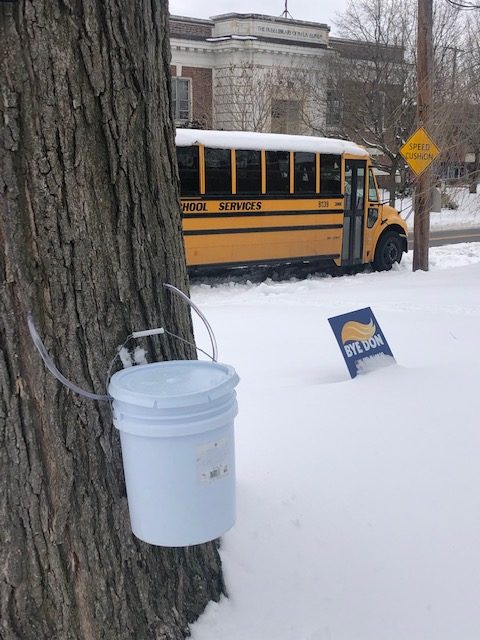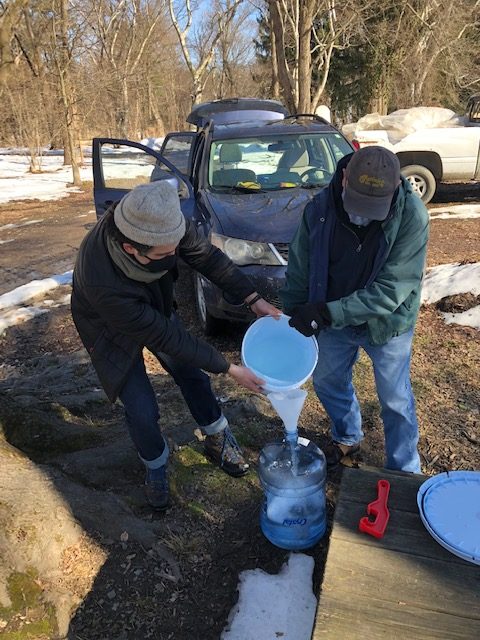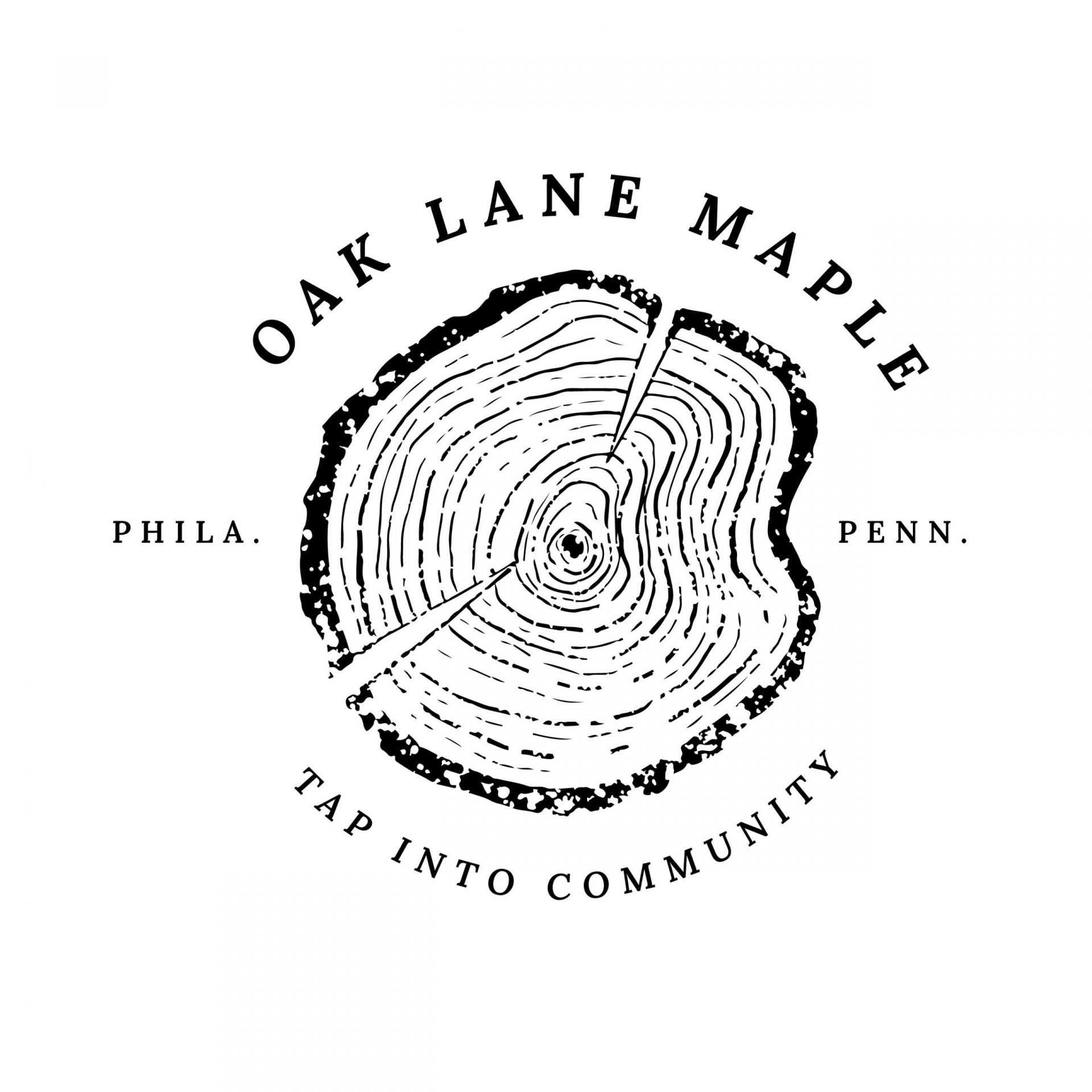When you think of Philadelphia, you don’t think of maple syrup. Right? Cheese steaks and scrapple, sure! (Also, Rocky and the Liberty Bell.) But not maple. There’s now a chance that might change, thanks to the creative ingenuity of folks in Philadelphia’s East Oak Lane neighborhood.
While this culinary connection may be new, the historical link between Philadelphia and maple is old. When William Penn planned the city in 1682, he included plenty of green space. That green space, including green space in East Oak Lane, supports a large number of (now often large) sugar, black, silver and red maples. In the 1700s, Philadelphia Quakers organized the Free Produce Movement, a consumer boycott that avoided products made with the labor of enslaved people, and urged folks to choose, among other things, maple sugar over cane sugar.
And, of course, like the rest of us, Philadelphians have been enjoying 100% pure maple syrup for a long, long time. But, until recently, they weren’t making much of their own. That has begun to change.
In January of 2020, a Philadelphian named Jethro Heiko, a community engagement organizer and activist (among his projects: helping the people of the Fenway-Kenmore neighborhood in Boston save Fenway Park) made his first gallon of syrup. Like so many a beginner,

A tapped maple on a busy Philadelphia street.
he had a nice big sugar maple in his yard, a propane burner, some hotel pans, and curiosity. A year later, during that long COVID winter, Jethro founded Oak Lane Maple, and proceeded to shepherd his community through tapping 40 neighborhood maples and producing 20 gallons of the good stuff.
Jethro started by walking around his neighborhood in the dead of winter to identify maple trees by their bark (hard but not impossible) and then went door-to-door to ask if the homeowners would be interested in a cooperative arrangement: free syrup in exchange for sap. Jethro got a lot of yesses! Oak Lane Maple got access to 20 trees this way, and 20 more with permission from Awbury Arboretum – among them, sugar maple, red maple, black maple, silver maple and Norway maple. Each tree was tapped with metal taps and connected to food-safe, 5-gallon buckets with tubes.
One of the benefits of sugaring in the city? The trees are huge. “We didn’t tap a tree smaller than 30 inches in diameter” said Jethro. “And some were in excess of 40 inches.” These trees, which are situated in a long-time gardening district with rich soils, tend to have large crowns. The result? Productivity. While Oak Lane Maple did discover that 10 out of their 40 trees were “duds,” there were some trees that produced 5 gallons of sap per day for multiple days per week for each week of the season. That’s a lot of sap!

For Oak Lane Maple, it’s all about the community of sugaring.
Thankfully, Jethro had made a connection with Stockton University, a school in nearby New Jersey that has been looking into the viability of local red maple syrup production by virtue of an USDA grant. In exchange for data (Oak Lane Maple’s trees averaged 3% sugar in their sap – not bad!) Stockton offered to pick up and boil up to 150 gallons weekly and donated some supplies to the Oak Lane Maple effort. Not knowing whether the latex content would ruin the syrup, Jethro kept the Norway maple sap separated, but otherwise mixed the saps and relied on Stockton to help with the boiling. In the end, Oak Lane Maple made 20 gallons of 100% pure maple syrup (Jethro reported that the Norway maple syrup “tasted fine.”) from those 30 productive trees, held several community events, and even earned some media attention.
Oak Lane Maple also brought people together and taught them something new about their surroundings. Said neighbor Kirsten, “I’ve been to maple syrup events and I never applied it to my brain, that I have a huge maple tree in my backyard that I can get maple syrup from.” Neighbor Sam was “glad [his daughter] could be a part of it at such an early age,” and hoped it was “something she can look forward to every year.”
For Jethro, bringing people together to appreciate and take ownership over their own resources is what it’s all about. I guess that’s why, when Stockton asked if he’d take a job continuing his work with Oak Lane Maple and replicating it in five additional communities in nearby South Jersey, Jethro accepted. Between Oak Lane Maple and the Stockton gig, there’s no knowing how many taps Jethro will be responsible for in 2022 (since the leaves came out this spring, he’s identified 50 sugar maples within 1/2 mile of his house alone). But, because “it’s less about the number of trees and more about community,” if this year is any indication, it’s sure to be a hit!
While Oak Lane Maple is certainly unique, Philadelphia is not alone in urban sugaring. The Tap O.N.E. project in Burlington, Vermont and the Sommerville Maple Syrup Project outside of Boston, Massachusetts are two more examples from the 2021 season. If you know another example of maple syrup being made in an urban area, please let us know so we can celebrate it!

